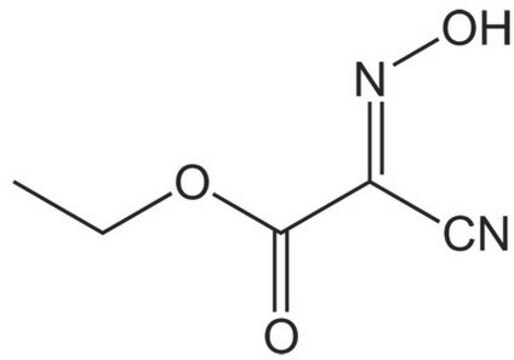推薦產品
product name
Fmoc-Asp(OBno)-OH, Novabiochem®
品質等級
產品線
Novabiochem®
形狀
powder
反應適用性
reaction type: Fmoc solid-phase peptide synthesis
製造商/商標名
Novabiochem®
應用
peptide synthesis
官能基
carboxylic acid
儲存溫度
−20°C (−15°C to −25°C)
一般說明
An excellent derivative for minimizing aspartimide formation during Fmoc SPPS, including those containing the Asp-Gly sequence. The bulky OBno protecting group offers considerably more protection against the formation of aspartimide-related by-products than the commonly used OtBu and OMpe group.,
Associated Protocols and Technical Articles
Cleavage and Deprotection Protocols for Fmoc SPPS
Overcoming Aspartimide Formation in Fmoc SPPS
Literature references:
[1] R. Behrendt, et al. (2015) J. Pept. Sci., 21, 680.
[2] R. Behrendt, et al. (2016) J. Pept. Sci., 22, 92.
Associated Protocols and Technical Articles
Cleavage and Deprotection Protocols for Fmoc SPPS
Overcoming Aspartimide Formation in Fmoc SPPS
Literature references:
[1] R. Behrendt, et al. (2015) J. Pept. Sci., 21, 680.
[2] R. Behrendt, et al. (2016) J. Pept. Sci., 22, 92.
應用
Recently, Fmoc-Asp(OBno)-OH has been used in the synthesis of the mini-protein Omomyc, which has been shown to repress MYC-dependent gene transcription.,
分析報告
Color (visual): white to beige
Appearance of substance (visual): powder, chunks or crystals
Identity (IR): passes test
Purity (TLC (018A)): ≥ 95 %
Enantiomeric purity: ≥ 99.5 % (a/a)
Assay (HPLC, area%): ≥ 97.0 % (a/a)
Solubility (1 mmole in 2 ml DMF): clearly soluble
To see the solvent systems used for TLC of Novabiochem® products please click here.
Appearance of substance (visual): powder, chunks or crystals
Identity (IR): passes test
Purity (TLC (018A)): ≥ 95 %
Enantiomeric purity: ≥ 99.5 % (a/a)
Assay (HPLC, area%): ≥ 97.0 % (a/a)
Solubility (1 mmole in 2 ml DMF): clearly soluble
To see the solvent systems used for TLC of Novabiochem® products please click here.
法律資訊
Novabiochem is a registered trademark of Merck KGaA, Darmstadt, Germany
儲存類別代碼
11 - Combustible Solids
水污染物質分類(WGK)
WGK 2
閃點(°F)
Not applicable
閃點(°C)
Not applicable
分析證明 (COA)
輸入產品批次/批號來搜索 分析證明 (COA)。在產品’s標籤上找到批次和批號,寫有 ‘Lot’或‘Batch’.。
客戶也查看了
文章
Aspartimide formation 1,2 is caused by repeated exposure of aspartic acid-containing sequences to bases like piperidine and can result ultimately in the generation of 9 different by-products.
Aspartimide formation 1,2 is caused by repeated exposure of aspartic acid-containing sequences to bases like piperidine and can result ultimately in the generation of 9 different by-products.
我們的科學家團隊在所有研究領域都有豐富的經驗,包括生命科學、材料科學、化學合成、色譜、分析等.
聯絡技術服務
